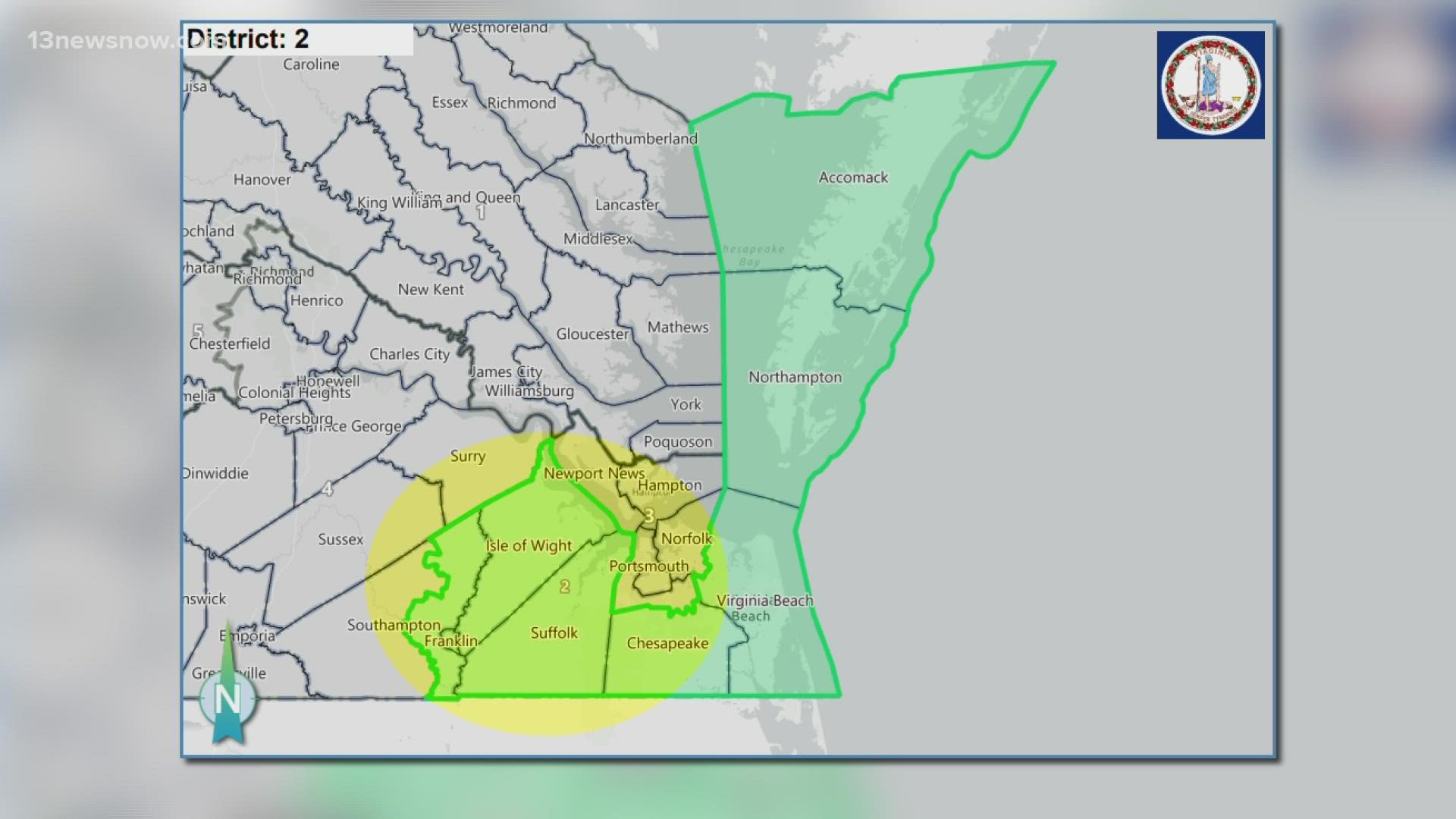NORFOLK, Va. — Redistricting in Virginia could make some political races in Hampton Roads even more competitive, while dozens of state lawmakers could find themselves in the same district as another incumbent politician.
After Virginia’s Redistricting Commission failed to reach any agreement, the responsibility of drawing new maps was passed on to the Supreme Court of Virginia, which appointed two special masters to find a compromise.
The new map proposals, shared this week, would significantly change Virginia's 2nd Congressional District, which is currently represented by Democrat Elaine Luria.
Luria’s district would lose parts of Norfolk, Hampton, Williamsburg, James City County and York County.
It would add parts of Chesapeake, Suffolk and Isle of Wight County, which would likely give Republicans a boost, according to Virginia Tech professor and redistricting expert Nicholas Goedert.
“That seat was in danger for the Democrats regardless and now I think it’s very much in danger," Goedert said. "I would say Republicans are probably favored to win it under the lines proposed by the court."
Goedert said the map drawers created a reasonable distribution of partisan strength for both Republicans and Democrats, adding that he doesn't believe either political party has a strong reason to be upset.
He said the most likely result of upcoming Virginia elections for the U.S. House of Representatives based on these maps would be six Democrats and five Republicans. Currently, Democrats hold a seven to four advantage in the 11 Congressional spots.
"The Supreme Court of Virginia does not have to approve these maps, but if they do, it does not appear to me the [special masters] were acting in any partisan capacity," Goedert said.
In a memo to the court, the special masters said the redrawn 2nd District would give Democrats a 49.6% to 48.3% advantage, based on election results from 2016 and 2020.
"Overall, this map is well-balanced, does not unduly favor any party, and does not require further adjustment," the special masters wrote, explaining they also expect a six to five partisan split of the U.S. House seats in most years.
The special masters expanded on their rationale and joint effort in a 55-page memo shared with the court and the public.
They also drew state senate and house of delegates maps without considering where incumbent politicians live.
Under the proposal, about half of all current delegates and state senators would live in the same district as another lawmaker, according to an analysis by the Virginia Public Access Project.
This could lead to major changes in state races, with new candidates needed for dozens of areas.
"So I think we could see a lot more competition in the legislative elections, and you could have pretty major shakeups as a result of this, maybe more than you would had the legislature drawn the maps," Goedert said.
The Supreme Court of Virginia is asking for public comments on the map proposals at two virtual public hearings next week – on Wednesday and Friday afternoon from 1 to 4 p.m.
The Princeton Gerrymandering Project also published its analysis of the map proposals, giving an 'A' grade to the Congressional and House of Delegates maps and their partisan fairness, but a 'B' grade with an 'F' for competitiveness for the State Senate map.

